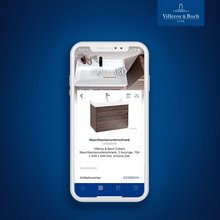
"East Meets West" was the motto of the international expert congress that was held at Villeroy & Boch in Mettlach in September 2015, where architects, interior architects and planners from Europe, America and Asia came together to discuss the future of the bathroom within an intercultural context. A highly topical subject, as the importance of the bathroom is a matter of constant change. Global developments such as demographic change, the urbanisation of society and medical progress, but also universal design trends and construction in existing buildings have a major influence on the bathroom.
Are there intercultural differences between East and West with regard to bathrooms? And what are the spatial and functional requirements that a bathroom must meet today and in the future? Steve Leung, an internationally well-known architect, interior and product designer from Hong Kong and the trend researcher Oona Horx-Strathern from the Zukunftsinstitut (Future Institute) Vienna have looked into these issues. They have some exciting findings.
East: Well-being in the smallest of spaces.
With his interior designs, Steve Leung operates in the field of tension between Chinese architecture and Western design elements and successfully combines them in his room concepts. His bathroom designs provide comfort at the highest level and have a pronounced feel-good character, and this is achieved in the smallest of spaces. This is necessary because even luxury apartments only have a very small floor space due to the extremely high property prices in Hong Kong and China.
In spite of its small size, the bathroom is a place for relaxation and recuperation, where one retreats to after a busy day at work. The interiors are expensive, but also highly individual and personal: Carpets, wallpaper and furniture give the bathroom a cosy atmosphere. Leung chooses compact designs with clever details for the sanitary elements, for example, from the Architectura collection, which he developed for Villeroy & Boch. The current collection comprises a wide choice of sanitary ceramics in various sizes and shapes, which offers system solutions for any room situation and configuration requirement, and thus meets even the highest requirements of planners and architects.
Steve Leung is the founder and chairman of Steve Leung Designers Ltd. With more than 400 employees, Steve Leung Designers Ltd is one of the biggest design agencies in Asia. In the years 1999 to 2014, he won over 120 design awards, including the "Oscar of Design" on 12 occasions. His works are unique: minimalistic and derived from Asian art and culture.
Interview Videos
West: From wellness to selfness.
Whilst Steve Leung develops high-quality designs for the current bathroom culture in Hong Kong and China, Oona Horx-Strathern from the Zukunftsinstitut (Future Institute) in Vienna is dealing with the coming megatrends – trends that will also influence the architecture and bathroom of the future. In 1999, Oona Horx-Strathern, trend researcher and author, together with her husband, the trend researcher and futurologist, Matthias Horx, founded the Zukunftsinstitut in Vienna, which advises numerous European companies in all economic areas.
To answer the questions "How will we live?" and "How do we envisage life in the future?", Oona Horx-Strathern identified eleven megatrends that will determine our life in the future. On the subject of home and living, she noted that the rooms and their functions have already changed quite substantially and will continue to do so. Not only the kitchen has changed over the past 20 years and has now often become an open living and communication centre integrated in the living area, but the bathroom has also changed quite substantially: A place that was only used for personal hygiene has now become a wellness room where bodily health is cared for.
In view of trends such as urbanisation, individualisation and the "Silver Society" of active and well-funded senior citizens, Horx-Strathern believes that the bathroom will not be characterised by technological developments in the future. On the contrary: The bathroom will become a second living room, a retreat from the daily grind, an oasis of well-being and self-discovery. Wellness becomes selfness – spiritual well-being, inner attentiveness and mental health.
The design evolution in the bathroom will shape up accordingly: Whereas sanitary equipment used to be more functional and practical, nowadays a successful arrangement and design have become very important. At the same time, it is becoming increasingly common to access the bathroom from the bedroom. Even a symbiosis of both rooms in the form of a "bothroom" is possible. Horx-Strathern sees the bathroom of the future as a boudoir in a salon style, in which furniture is used in place of fitted objects. As all elements are flexible and movable, you can then adapt the bathroom to your current requirements at any time.




